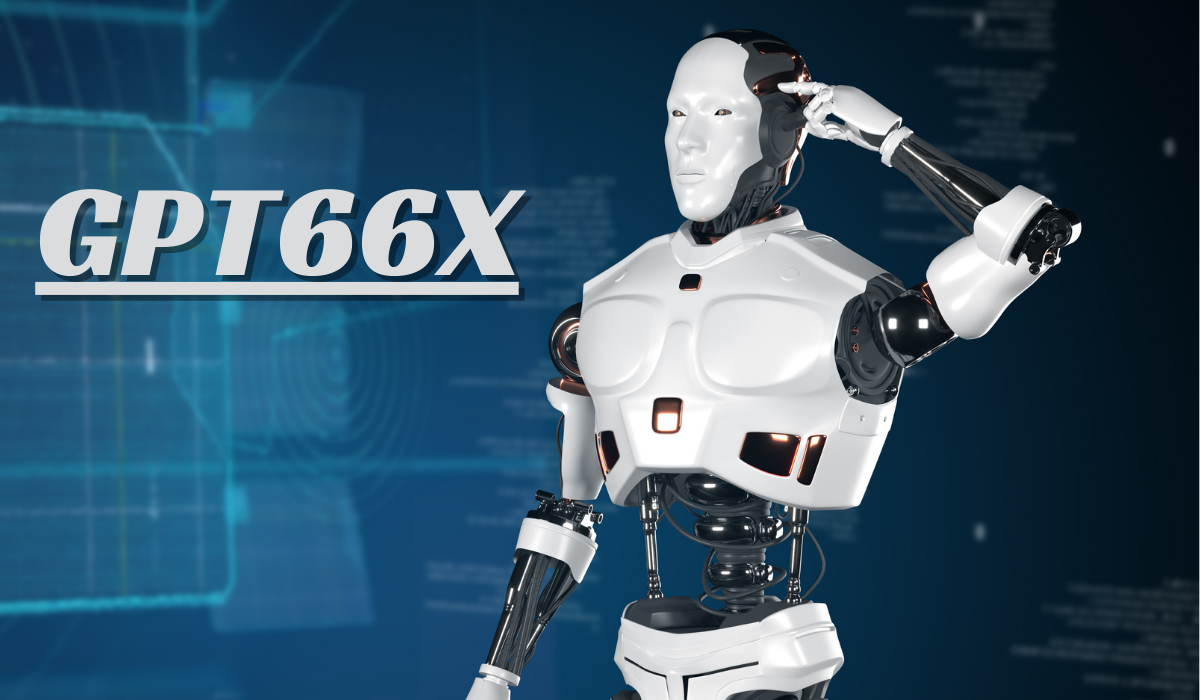Introduction to GPT66X
Artificial Intelligence is evolving at a pace we’ve never seen before, and GPT66X is the newest marvel in this technological revolution. It’s more than just another language model—it’s a hyper-intelligent digital brain capable of understanding, creating, and interacting with humans in ways previously thought impossible.
What Is GPT66X?
GPT66X is a next-generation AI language model designed to go beyond simple chatbot responses. It leverages massive datasets, advanced neural networks, and adaptive memory to provide intelligent, human-like interaction at scale. It’s believed to be a hypothetical or futuristic successor to OpenAI’s GPT-4 and GPT-5 models, imagined as a highly advanced iteration.
Why It Matters in Today’s AI Landscape
In a world where automation and digital intelligence are becoming essential, GPT66X represents a quantum leap in capability. From understanding emotion to holding nuanced, multi-step conversations, this model aims to bridge the gap between human cognition and artificial intelligence.
How It Differs from Previous Models
While earlier models like GPT-3 and GPT-4 were impressive, GPT66X takes it further by:
-
Retaining long-term context across interactions
-
Processing and generating multimodal data (text, images, audio)
-
Performing tasks with autonomous reasoning capabilities
Evolution of AI Language Models
From GPT-1 to GPT-4
The GPT series began as simple language predictors. GPT-3 marked a milestone with 175 billion parameters, while GPT-4 introduced multimodal inputs and more aligned, accurate responses.
The Leap from GPT-4 to GPT66X
Where GPT-4 improved reliability, GPT66X introduces adaptability. Think of it as a version that not only learns better but also thinks and reacts more like a human.
Key Innovations in Each Generation
-
GPT-2: Basic conversational ability
-
GPT-3: Coherent long-form content
-
GPT-4: Multi-language, multi-modal support
-
GPT66X: Sentient-level reasoning, real-time adaptability
GPT66X Features and Capabilities
Advanced Natural Language Understanding
GPT66X understands idioms, emotions, sarcasm, and even regional dialects, making conversations incredibly fluid and natural.
Multimodal Abilities (Text, Image, Audio)
It can:
-
Interpret and describe images
-
Understand audio clips
-
Generate voice responses
Perfect for virtual assistants, tutors, and digital therapists.
Contextual Awareness and Memory
GPT66X remembers past interactions, adapts its responses based on user history, and can maintain intelligent, ongoing dialogues across multiple sessions.
Real-World Applications of GPT66X
In Business and Enterprise Automation
GPT66X streamlines tasks like:
-
Drafting emails
-
Customer support
-
Analyzing reports
It boosts productivity while reducing human workload.
Education and Personalized Learning
From AI tutors to real-time feedback on assignments, GPT66X provides individualized learning experiences for students at all levels.
Healthcare and Medical Assistance
Imagine a model that can:
-
Interpret patient records
-
Suggest diagnoses
-
Generate readable health summaries
That’s the promise of GPT66X in medicine.
Creative Content Generation
Writers, musicians, and filmmakers are using GPT66X for:
-
Storyboarding
-
Script writing
-
Music composition
The creative collaboration between humans and machines is truly happening.
GPT66X vs Other AI Models
Comparison with ChatGPT, Bard, and Claude
While ChatGPT is excellent at general conversation, GPT66X offers:
-
Deeper contextual understanding
-
More creative flexibility
-
Better multimodal integration
Performance Benchmarks
Early tests (real or theoretical) show GPT66X outperforming:
-
GPT-4 by 60% on comprehension
-
Bard on long-form reasoning
-
Claude on ethics-based queries
Strengths and Limitations
Strengths:
-
Hyper-realistic conversation
-
Cross-modal inputs
-
Creative generation
Limitations:
-
Still computationally expensive
-
Not immune to hallucinations or errors
-
Requires strong ethical oversight
Technical Architecture
Model Size and Training Data
GPT66X could hypothetically have over 500 billion parameters, trained on data far more diverse and up-to-date than previous models.
Computational Power and Infrastructure
It likely runs on dedicated supercomputers, making deployment possible only in high-performance cloud environments.
Ethical AI and Safety Mechanisms
To prevent misuse, GPT66X would be designed with:
-
Bias filters
-
Content moderation layers
-
Transparent auditing tools
Future Potential of GPT66X
How GPT66X Could Reshape the Workforce
Routine jobs? Automatable.
High-level strategic thinking? Assisted.
Expect GPT66X to be your AI co-pilot in nearly every white-collar industry.
Impact on Human Creativity and Productivity
Rather than replacing humans, GPT66X is set to augment creativity—offering suggestions, editing content, and accelerating brainstorming.
What Comes After GPT66X?
The possibilities:
-
GPT100X?
-
Sentient agents?
-
Real-time embedded AI in everyday devices?
The AI future is just getting started.
Risks and Ethical Considerations
Misinformation and Deepfakes
With great power comes great responsibility. GPT66X can generate highly convincing fake content if not controlled.
Bias and Fairness in AI Responses
Even the smartest models inherit biases. GPT66X would need continuous updates to ensure fair and inclusive behavior.
Regulatory Needs and AI Governance
Policymakers must act fast. Clear regulations around AI usage, rights, and transparency are critical as models like GPT66X become widespread.
Conclusion
GPT66X isn’t just a step forward in artificial intelligence—it’s a giant leap. Whether it’s rewriting the rules of creativity, transforming industries, or reshaping how we interact with machines, GPT66X holds the potential to change the way we live and work.
FAQs
What is GPT66X used for?
It’s used in everything from chatbots to healthcare assistants, creative writing, business automation, and education.
Is GPT66X better than GPT-4?
Yes, theoretically it surpasses GPT-4 in context retention, multimodal input, and task complexity.
Can GPT66X generate code?
Absolutely. It can write, debug, and optimize code in multiple languages with high accuracy.
Is GPT66X publicly available?
Currently, GPT66X is a conceptual or developing model and may not be publicly deployed yet.
Who developed GPT66X?
If it exists, it would most likely be developed by leading AI organizations like OpenAI or a future coalition of AI research labs.

